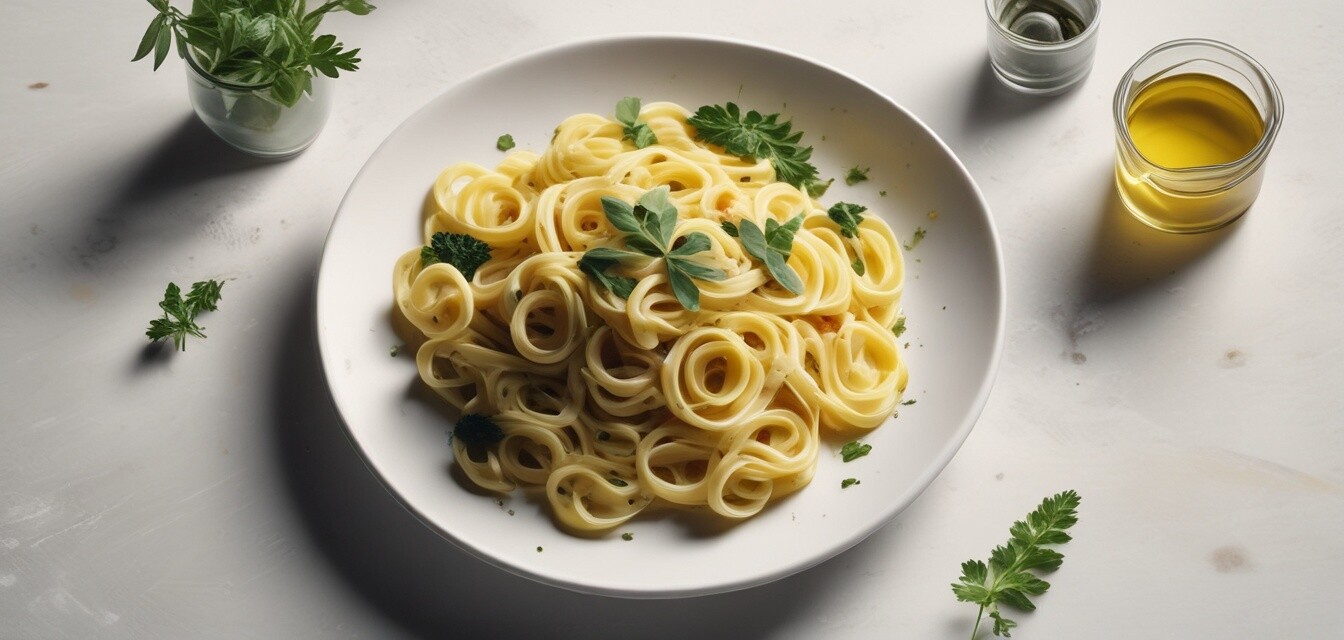
The essentials of making homemade pasta
Welcome to the wonderful world of homemade pasta! In this article, we'll explore the essential techniques and recipes you’ll need to create delicious pasta from scratch. Whether you're a seasoned cook or a complete novice, our step-by-step guide will equip you with the skills you need to impress your family and friends.
Key Takeaways
- Understanding the basic ingredients: flour and eggs.
- Key techniques for kneading, rolling, and cutting pasta.
- Various types of pasta and their uses.
- Simple recipes to get started with homemade pasta.
What you need to make homemade pasta
Making homemade pasta requires just a few simple ingredients and tools. Here’s what you'll need:
| Ingredient/Tool | Purpose |
|---|---|
| All-purpose flour | Main ingredient for pasta dough |
| Eggs | Provides richness and binds the dough |
| Salt | Enhances flavor |
| Olive oil | Keeps the dough pliable |
| Pasta machine or rolling pin | Used for rolling out the dough |
| Knife or pasta cutter | For cutting pasta into desired shapes |
| Flour (for dusting) | Prevents sticking |
The basic process of making pasta
Here’s a simple step-by-step guide to making your own pasta:
- Mix the ingredients: Start with a well of flour on a clean surface. Add eggs and salt into the well, then gradually incorporate flour until a dough forms.
- Knead the dough: Knead the dough for about 10 minutes until smooth and elastic. Wrap it in plastic wrap and let it rest for at least 30 minutes.
- Roll out the dough: Divide the dough into manageable portions. Use a pasta machine or rolling pin to roll it out to your desired thickness.
- Cut the pasta: Use a knife or pasta cutter to shape your pasta into your favorite type (fettuccine, tagliatelle, etc.).
- Cook the pasta: Cook fresh pasta in boiling salted water for 2-4 minutes or until al dente. Drain and serve with your favorite sauce.
Types of pasta and their uses
Understanding the different types of pasta can help you choose the right one for your dish. Below are some popular types of pasta and their typical uses:
| Type of Pasta | Common Uses |
|---|---|
| Fettuccine | Works well with creamy sauces, like Alfredo |
| Penne | Great for baked pasta dishes and salads |
| Spaghetti | Classic for marinara and meat sauces |
| Lasagna | Used in layered dishes baked with sauce and cheese |
| Ravioli | Stuffed pasta, often served with light sauces |
Tips for perfect homemade pasta
Helpful tips
- Use high-quality flour for the best texture and flavor.
- Don't rush the resting process; it helps with gluten development.
- Experiment with different shapes and sauces to find your favorite combinations.
- Practice makes perfect; the more you make pasta, the better it will get!
- Always season your cooking water with salt to enhance flavor.
Incorporating specialty ingredients
Once you've mastered the basic pasta dough, you can get creative by incorporating other ingredients such as:
- Spinach: Blend fresh spinach into the dough for a vibrant green pasta.
- Tomato paste: Adds color and flavor to your pasta.
- Herbs: Incorporate finely chopped herbs for an aromatic twist.
- Beets: Adds a natural red hue and slightly sweet flavor.
Conclusion
Now that you know the essentials of making homemade pasta, it's time to get into the kitchen and start creating! Enjoy the process, experiment with flavors, and don’t hesitate to dive into the wide world of pasta making. For more cooking tips and techniques, check out our Cooking Tips & Techniques section.
Pros
- Homemade pasta is fresher and can be customized to your taste.
- It can be a fun cooking activity with family.
- Makes for an impressive dish when served to guests.
Cons
- It requires practice to perfect the technique.
- Can be time-consuming compared to store-bought options.
- Requires specific tools which may not be readily available.